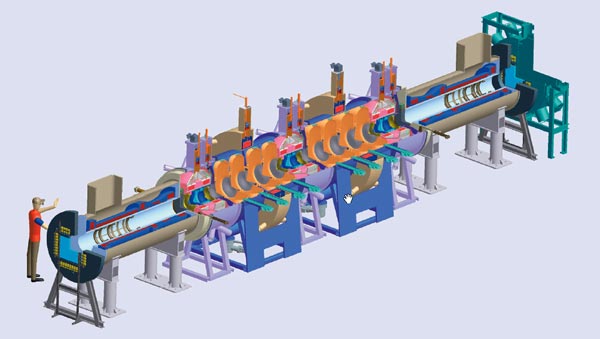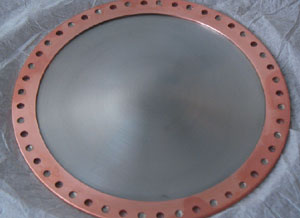On 21 March, the UK’s science and innovation minister announced the approval and funding of the Muon Ionisation Cooling Experiment, MICE, at the Rutherford Appleton Laboratory (RAL). MICE will use a new, dedicated muon beam line at the laboratory’s pulsed neutron and muon source, ISIS.

MICE is an essential step in accelerator R&D towards the realization of a neutrino factory, in which an intense neutrino beam is obtained from the decay of muons in a storage ring. The unique feature of such a facility is that it can produce intense and well defined beams of electron-(anti)neutrinos at high energies, well above the production threshold for tau particles. This should allow measurements of the “appearance” of both muon- and tau-neutrinos from electron-neutrinos. Neutrino factories are therefore the ultimate tool for precision studies of neutrino oscillations and of leptonic charge-parity (CP) violation, a measurement that might prove decisive in understanding the matter-antimatter asymmetry of the universe.
The largest novelty of a neutrino factory in terms of accelerator physics is probably muon ionization cooling, which improves performance by a factor of four to ten, depending on the design; it also represents a large fraction of the neutrino factory’s estimated cost. Although proposed more than 20 years ago and generally considered as sound, the ionization cooling of muons has never been demonstrated.

Muons are born in a rather undisciplined state at a few hundred million electron-volts from interactions of proton beams, and need to be cooled before they can be accelerated – to about 20 GeV – and stored to produce neutrinos. Known beam-cooling techniques (electron, stochastic or laser cooling) are much too slow, considering that muons live only a few microseconds before they decay.
A method that is expected to work instead is to cool the transverse phase-space of the beam by passing it through energy-absorbing material and accelerating structures embedded within a focusing magnetic lattice. The muons lose energy in both the transverse and longitudinal direction when they pass though the absorbers, while the acceleration increases only their longitudinal momentum. This technique, based on a principle first described by Russian pioneers Gersh Budker and Alexander Skrinsky in the early 1970s, is known as ionization cooling.
Unfortunately, although its mathematics is simple on paper, ionization cooling is in practice a delicate mix of technologies involving liquid hydrogen (the best absorber material), strong radio-frequency (RF) electric fields (to re-accelerate the muons in an orderly fashion) and magnetic fields for containment. This combination is extremely challenging. The windows of the vessel for the liquid hydrogen need to be as thin as possible to prevent multiple scattering, while ensuring safety in the confined space between potential sources that could ignite the highly inflammable hydrogen. The operation of RF cavities at high gradient in high magnetic fields is still unproven. Finally, the precise study of cooling requires measuring the beam properties with unprecedented accuracy; each muon will be measured using techniques from high-energy physics rather than standard beam diagnostics.
The size and complexity of this undertaking require the close collaboration of the accelerator and experimental particle-physics communities. MICE comprises some 140 physicists and engineers from Belgium, Italy, the Netherlands, Japan, Russia, Switzerland, the US and the UK. The proposed schedule for MICE envisages that the technical feasibility of muon ionization cooling will be established by 2008/9. The path will then be clear for a detailed proposal for a neutrino factory.
Further reading
See www.mice.iit.edu/.








